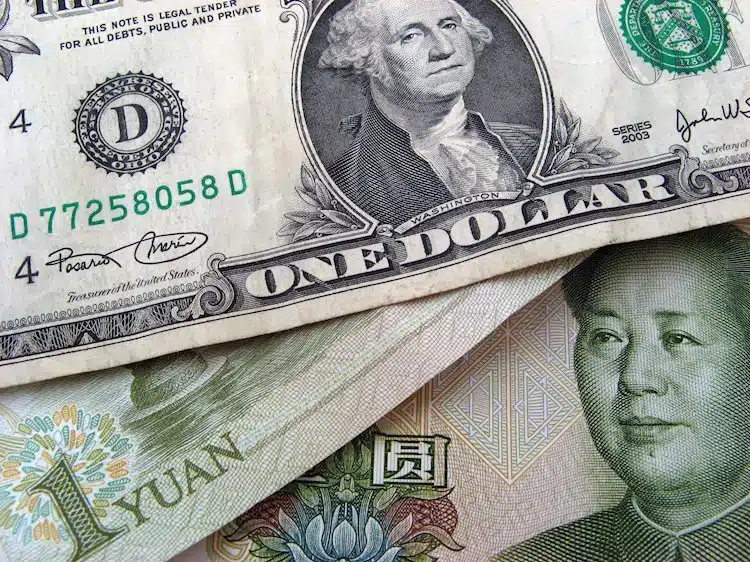In recent trading, the People’s Bank of China (PBOC) set the yuan at 6.9240 compared to the prior close of 6.9203 and an estimate of 6.9249. The Chinese yuan, as the official currency of China, plays an essential role in the country’s trade and economy.
The fix is a daily process used by the PBOC to manage the value of the yuan, which is also referred to as the renminbi. China maintains strict control over the yuan’s rate on the mainland, which is why there are two types of yuan: the onshore yuan (CNY) and the offshore yuan (CNH). The onshore yuan deals with trading restrictions, while the offshore one is not as tightly controlled.
Each morning, the PBOC sets a so-called “daily midpoint fix” according to the yuan’s previous day’s closing level and quotations taken from the inter-bank dealer. This midpoint serves as a reference rate for the banks and determines the trading range for the day.
This currency management system has been in place since 2005 when China abandoned the decades-old peg to the US dollar. The idea behind the managed floating exchange rate system is to prevent excessive volatility and maintain a stable exchange rate. However, it has been criticized for its lack of transparency and is often accused of being a tool for currency manipulation.
The PBOC does not set the fix based solely on market forces. Instead, it takes into account various factors such as domestic money market conditions, the international foreign exchange market, and macroeconomic indicators. This approach aims to ensure that the yuan’s value is relatively stable and does not experience sudden changes that could disrupt the country’s financial system.
The daily midpoint fix is essential for several reasons. Firstly, it provides guidance to the market on the PBOC’s view of the acceptable level of the yuan against other currencies. It helps maintain stability in the foreign exchange market by avoiding extreme swings that may undermine investor confidence and lead to capital flight.
Secondly, the fix serves as a benchmark for the trade settlement of the Chinese yuan in international transactions. Many companies and investors use the midpoint fix as a reference when converting the yuan to other currencies for cross-border trade or foreign exchange dealings. This ensures that the exchange rate remains relatively stable, and businesses can plan their transactions with a degree of certainty.
Finally, the daily fix also plays an essential role in China’s ongoing efforts to internationalize the yuan. To make the yuan a more attractive option for global traders, the PBOC must ensure the rate is stable yet flexible enough to adapt to changing market conditions. The daily fix is a crucial component of this process.
Despite efforts to make the yuan’s exchange rate more market-driven, it continues to face skepticism from international investors concerned about the lack of transparency in the fixing process. Critics argue that the PBOC is too interventionist and that the yuan is undervalued to maintain a competitive advantage for Chinese exporters.
To address these concerns, the PBOC began publishing the China Foreign Exchange Trade System (CFETS) yuan index in 2015. This index calculates the yuan’s value based on a basket of 24 currencies, including the US dollar, the euro, and the Japanese yen. This index aims to provide a more comprehensive picture of the yuan’s performance against a broader range of global currencies.
In conclusion, the PBOC’s daily midpoint fix of the yuan is a vital component of China’s currency management strategy. It enables the central bank to maintain control over the yuan’s value, prevents excessive volatility, and supports the currency’s internationalization efforts. However, as China’s economy continues to evolve and integrate with global markets, ensuring transparency and credibility in the fixing process will be essential to gaining the trust of international investors and promoting the yuan’s expanded role in global finance.


